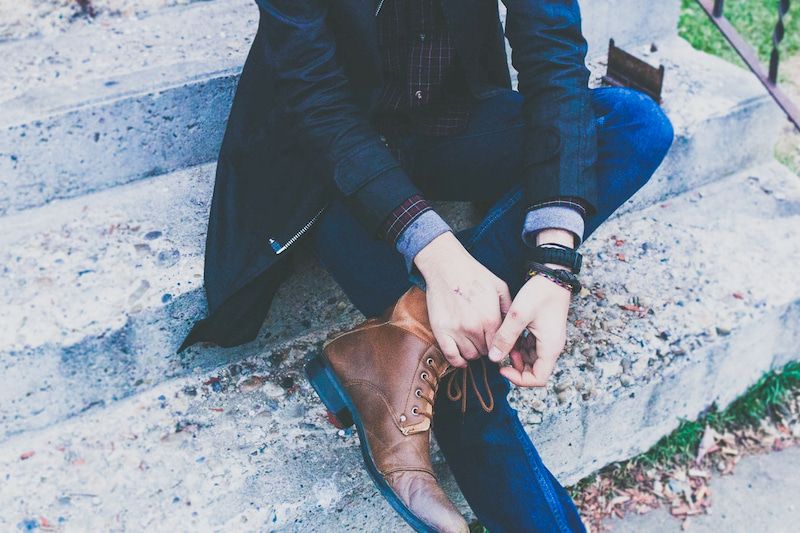Buying Men's Wide Shoes: Reasons Why You May Need Wide Shoes
There's no doubt that most of us have tried to squeeze our feet into tight shoes at some point in our lives, and some of us succeeded, and carried on wearing those tight shoes for quite a while before we got tired of the discomfort. Some people were less lucky and they got their feet deformed by them, and they now need correction, or they need to wear special orthopedic shoes to prevent pain and discomfort for the rest of their lives. The width of the shoes is often a neglected part of finding the perfect fit, simply because there's no standard width system used by manufacturers to measure the fit of wide, average and narrow shoes.
Even if your feet were average up until recently, the shape and size of your feet can change throughout your life, so if you never needed men's extra wide shoes before, you may need them now. Without properly fitting shoes, you increase the risk of cellulitis, abrasions and all types of discomfort, limited mobility, etc. However, you don't need to have wide feet to need men's extra wide shoes. There are a few other reasons why your feet may need wide shoes.

yA Medical Condition Causing Feet Swelling
There are quite a few medical conditions that can cause foot swelling, such as diabetes, lymphedema, obesity, plantar fasciitis, liver disease, kidney disease and treatments for cancer. Sometimes, the swelling can fluctuate between feet and even throughout the day, which can make it difficult to find shoes that will stay comfortable at all times. Some manufacturers have made shoes that can expand a few width sides and are fully adjustable to ensure comfort. They may feature adjustable toggles at the heel and on top of the foot.
Off-The-Shelf Shoes Can be Uncomfortable or Tight on One Foot
If most off-the-shelf shoes are too tight on one of your feet, no matter what size you choose, then you definitely need wide shoes. Most shoes are accommodating on average feet width, which means that even if you go for a size up, they can still end up being too tight. People who have two differently shaped or sized feet, finding shoes that fit properly can be hard. If that's the case, you might need to buy two pairs of shoes, or you can just go for expandable and adjustable shoes.
Hammertoes or Bunions
Hammertoes and bunions can make off-the-rack shoes uncomfortable to wear. Even if you think that your feet are average width, people with these conditions should look to wear wide shoes, as average shoes can put pressure on the hammertoes or bunions, creating blisters, causing even more irritation, creating callouses and leave your feet in a rough state.

Blisters, Calluses or Corns
Blisters from new shoes are a typical discomfort, but if you have chronic blisters, then your shoes don't fit properly. Tight shoes can cause blisters all over your feet, although they're usually found on the toe, balls or heels. This can be very painful and it can lead to infections if left untreated. Friction and pressure from tight shoes can cause calluses or corns over time. While calluses aren't always painful, corns are surrounded by inflamed skin that can lead to discomfort. The best way to treat both conditions is to reduce the friction by wearing wide shoes.
Imprints or Discolouration on Your Feet
After wearing your shoes for the whole day, the first thing you want to do when you get home is take them off to give your feet some fresh air. When you remove your shoes, if you notice a imprints on your feet or a purplish hue on your toes, it probably means that you're wearing shoes that are too tight. If you try to squeeze wide feet into average- or narrow-width shoes, blood circulation in the feet and toes, in particular, can be reduced, leading to painful and serious foot issues.
How Wide is Wide Enough?

Wide shoes should fit just like average-width shoes. They should have the same overall length, but the toe box and front section should be extended outwards in order to accommodate for wider feet. Wide shoes often come with a higher profile for more foot depth. The right size for you will depend based on the manufacturer, as there's no standard. Every brand has its own designation for wider fits, so you should do some research online, although it's highly recommended you go into a store and try the shoes before buying them. Some brands use letters for width, such as: A,B, D, E, a combination of letters and numbers, such as 2A, 2E, etc. or just wording such as: normal, wide, medium, extra wide, etc. Australia follows the same system as the UK for both men and women when it comes to sizing footwear.


